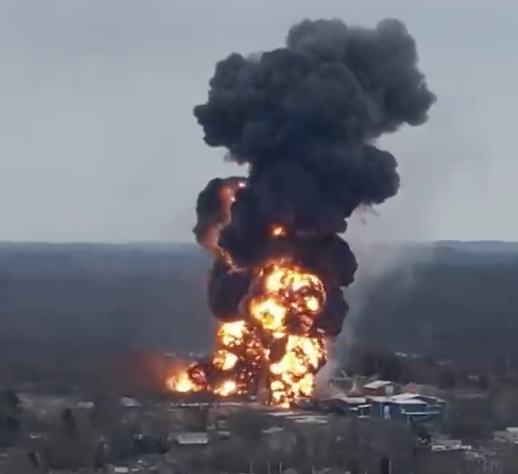Was the Ohio Train Derailing an Accident Waiting to Happen?
On February 3, a horrifying railroad accident took place. A Norfolk Southern freight train derailed in East Palestine, Ohio. There had been warnings about the cutbacks by management in the maintenance of the line.
On February 3, a horrifying railroad accident took place. A Norfolk Southern freight train derailed in East Palestine, Ohio. You might've seen images of the flames, but you probably haven't heard that unions were trying to prevent this exact accident. 🧵pic.twitter.com/pnynoFHSnm
— More Perfect Union (@MorePerfectUS) February 10, 2023
Union rail workers with @railroadworkers have warned of a "ticking time bomb" saying, “In the last 10 years, Class I carriers have dramatically increased both the length and tonnage of the average train while cutting back maintenance and inspection.” /2https://t.co/7FDg2w0Oi2
— More Perfect Union (@MorePerfectUS) February 10, 2023

From here
The train, NS 32N, which was built in Madison, IL and headed east to Conway, PA swapped out crews in Decatur, IL. This crew would experience trouble while running their route between Decatur, IL and Peru, IN. In fact, they did not complete their trip to Peru since they outlawed on the federal hours-of-service statute. The train severed a knuckle between two cars at Attica, IN. This occurred while the train was going downhill and while in dynamic braking. Pretty much the only time a train breaks in this scenario is when the train isn’t blocked properly. In order to mitigate in-train forces, railroads prior to PSR would build trains with the heavier cars on the head end and the lighter cars on the rear end. This prevents severe slack run-ins and run-outs throughout the trip and if the train’s emergency brakes are applied, you don’t have heavier cars running into lighter cars which causes jackknifing. This particular train had 40% of it’s weight on the rear 1/3 of the train. Most of this tonnage was made up of loaded tank cars which are very heavy and slosh back and forth when coming to a sudden stop. This sloshing after a stop can continue the pushing of more cars off a track in a jackknifing situation which is what occurred in this Ohio wreck. This block of tank cars was placed directly behind a block of cars that were in the middle of train which were equipped with cushioned draw bars. The draw bars on these cars slide in and out independent of the car body which helps protect the merchandise carried within from damage. These type of draw bars are usually on automobile carriers to prevent the cars/trucks inside from being damaged. Placing cars with these draw bars in the middle of a train creates elasticity. Building a train like this (Head end = locomotives, which are the heaviest part of any train, followed by heavy mixed freight loads, followed by a block of cushioned draw bar cars, followed by a block of heavy tank cars (such as the case with this 32N) is akin to placing two bowling balls on the ends of a rubber band and praying the rubber band doesn’t break.
Video footage has emerged online (see video link below) showing one of the wheels on this train on fire as it passed by the camera. If this footage is authentic, it’s very likely that car caused the derailment.

